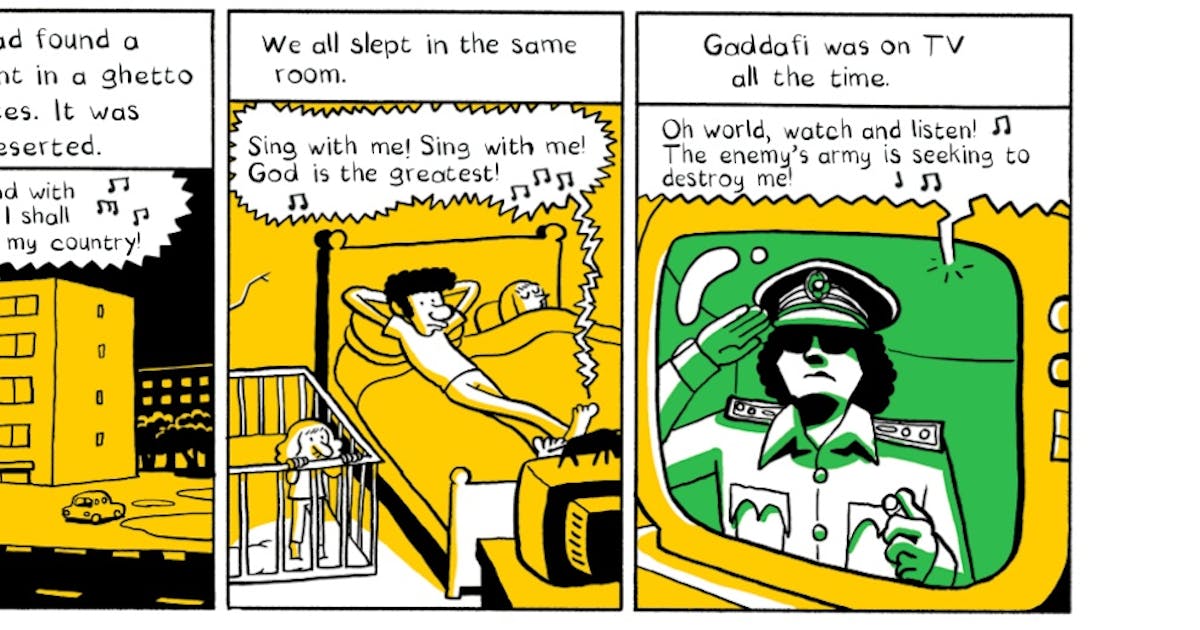
Riad Sattouf’s “The Arab of the Future”: A Graphic Memoir Bridging Cultures and Confronting Family History
Riad Sattouf’s internationally acclaimed graphic memoir, The Arab of the Future, offers a poignant and often humorous account of his childhood split between France and the Middle East. The first volume, covering 1978-1984, masterfully portrays the cultural clashes, familial complexities, and political realities experienced by a child caught between two worlds.
A Childhood Divided: France and the Middle East
Sattouf’s narrative unfolds through the innocent yet perceptive eyes of his younger self, providing a unique perspective on the stark cultural differences between France and the Middle East. He contrasts the perceived “dimness” and overprotection of French children with the harsher realities he encountered in Libya and Syria. This juxtaposition highlights the challenges of navigating vastly different cultural norms and expectations.
The memoir’s strength lies in its unflinching honesty, presented with a Candide-like naiveté. Young Riad’s observations, though innocent, reveal the complexities of his family dynamic and the volatile political landscapes he inhabits. His portrayal of Libya under Qaddafi, for example, captures the absurdity and contradictions of a totalitarian regime through a child’s eyes, highlighting the societal dysfunction and the everyday struggles of its people amidst political turmoil.
Sattouf skillfully uses the graphic novel format to convey emotions and experiences, enhancing the storytelling. The visual elements complement the narrative, creating a powerful and engaging reading experience. This stylistic choice is particularly effective in portraying the emotional complexities of a child’s world, blending humor with poignant observations.
A Complex Family Dynamic: The Father’s Influence
A central theme in the memoir is the complex relationship between young Riad and his father, Abdel-Razak. The father is portrayed as a flawed yet compelling character, whose bitterness towards the West and embrace of Arab strongmen shape the family’s nomadic existence. Sattouf’s portrayal is not entirely negative; there are moments of tenderness and affection, but the father’s flaws and contradictions are laid bare.
Abdel-Razak’s character embodies the complexities of identity and belonging in a rapidly changing world. His disillusionment with the West, coupled with his unwavering belief in a pan-Arab renaissance, fuels his erratic decision-making and contributes to the family’s instability. The father’s character, though imperfect, remains a central force in shaping the narrative and driving the family’s journey.
Sattouf’s depiction of his father is not without criticism. Some have argued that it presents an overly negative portrayal of Arabs as a whole. However, the memoir’s focus is on the individual experiences of a family navigating complex cultural and political landscapes; it’s a personal story, not a sweeping generalization. The author’s intent is to convey his own experiences and perspectives, not to offer a comprehensive sociological study.
Political Cartoons and the Middle East
The memoir’s publication coincides with the rise of political cartoons as a significant form of expression in the Middle East. The use of cartoons, both in the memoir’s visual style and in the historical context of Middle Eastern political discourse, highlights the power of visual storytelling to challenge authority and express dissent. Sattouf’s work itself embodies this tradition, using visual storytelling to offer a critical yet personal perspective on the region’s complex realities.
The historical context of political cartoons in the Middle East, dating back to the late nineteenth century, adds another layer of meaning to Sattouf’s work. The evolution of political cartoons as a form of commentary and resistance mirrors the evolution of the Middle East itself, highlighting the role of visual art in expressing social and political views. Sattouf’s work participates in this rich tradition, offering a contemporary perspective on the role of the graphic novel in addressing complex social and political issues.
The memoir’s success is partly due to its ability to blend personal storytelling with a broader understanding of historical and political contexts. Sattouf’s work bridges cultural divides, offering a unique perspective on the Middle East and its relationship with the West. It’s a powerful and timely contribution to the ongoing dialogue about identity, culture, and the complexities of the human experience.
Key Takeaways
- The Arab of the Future offers a unique perspective on a childhood split between France and the Middle East.
- The memoir portrays a complex family dynamic, highlighting the flaws and contradictions of the father’s character.
- Sattouf’s use of the graphic novel format enhances the storytelling and emotional impact.
- The work’s publication coincides with the rise of political cartoons as a form of expression in the Middle East.
- The memoir successfully blends personal storytelling with broader historical and political contexts.




.png?width=1200&height=630&fit=crop&enable=upscale&auto=webp)

